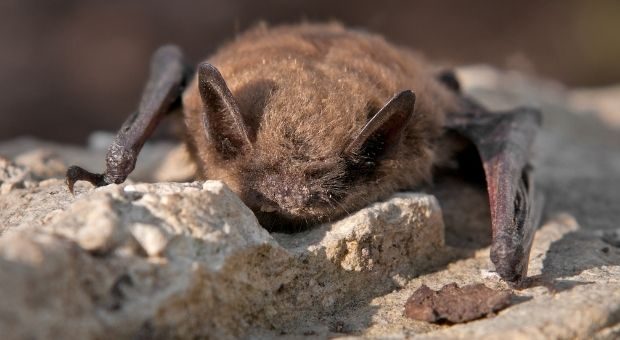18
May
Bat Losses Costing American Farmers Half a Billion Dollars Annually

(Beyond Pesticides, May 18, 2022) Bat population declines are costing American farmers as much as $495 million each year, finds research published this month in the Journal of the Association of Environmental and Resource Economists. Since 2006, a devastating fungal pathogen known as Pseudogymnoascus destructans has torn through U.S. bat populations, causing a disease known as White Nose Syndrome that has killed over 90% of northern long eared, little brown, and tricolored bats. As researchers try to get a handle on the devastating and rapidly spreading disease, the effects are becoming apparent in agriculture as farmers lose their critical ecosystem services. “Lost bat populations have harmful ripple effects on food and agriculture,” says study coauthor Amy Ando, PhD. “Crop yields fall and input costs rise as farmers try to compensate for the services bats usually provide. That drives down the value of farmland and the number of acres planted, and the supply shock probably also hurts consumers as ag production becomes more costly.”
White nose syndrome and its fungal pathogen were first discovered in a cave in New York in the mid-2000s, having likely traveled from Europe on the gear of a hiker or spelunker. The syndrome is characterized by white fungal growth on the muzzle of infected bats. Researchers believe that bats become infected with the fungus during hibernation. The fungus colonizes the skin of bats and ultimately affects their entire body, resulting in bodily dysfunctions that can cause bats to wake up early for hibernation, and burn through fat reserves before spring insects arrive. There is no known cure to the disease, and recent data indicates that it has spread from the single New York cave to dozens of states, reaching as far north as Canada’s Manitoba province and as far west as Seattle, Washington.
To determine how the disease and subsequent loss of pest control services is affecting farmer’s bottom lines, researchers calculated the value of bat ecosystem services, focusing in particular on corn, wheat and soy crops grown extensively throughout the U.S. They then determined how the loss of bats affected the land rental rates for farmland in a U.S. county. Results show that land rentals fell by $2.84 per acre in an affected county, and $1.50 in counties nearby the disease outbreak. Not only did land rental rates decrease, but functional agricultural lands were reduced in total–including roughly 1,100 acres in a county with a disease outbreak and 582 acres in nearby counties.
“If you no longer get that free pest control you’ve had on marginal land where yields may be lower than average and input costs are already high, then having to also deal with yield loss and/or purchase chemical pesticides to replace the bats’ service can be enough to make land no longer viable,” said Dale Manning, PhD, professor of agricultural and resource economics at CSU, and lead author on the paper.
Increases in chemical pesticide use can cause additional ripple effects that further harm bats and other ecosystem services. A study published late last month found that pesticides can accumulate in fly larvae and be retained through a pest insect’s metamorphosis. The bioconcentration of pesticides in pest insects can then act as a chronic source of exposure to birds and bats that feed on them. The authors of the research note how declines in these important animals have coincided with increases in toxic pesticide use over the last two decades. Pesticide use harms the immune system of most animal, making contaminated populations more susceptible and at increased risk of disease.
As declines in bird and bat populations continue to occur, it is becoming increasingly clear that just like the loss of pollinators, ecosystem services provided by bats cannot be adequately replaced by human activities. “Some bats are important pollinators for high-value crops in tropical and desert climates, and guano [bat dung] is an important fertilizer in some parts of the world,” Dr. Ando says. “But the biggest benefit people get from the bats hurt by white-nose syndrome is pest control. The humble little brown bat can eat over half of its body weight in bugs every night.”
Researchers note that their estimate on the value of bat ecosystem services are conservative, and do not include a range of add-on benefits provided by these animals. In addition to pest management, bats provide a public health benefit, and thus lower health care costs by reducing toxic pesticide use on chemical farms, in addition to their ability to lower the rate of mosquito borne disease. Bats are also incredibly useful in the study of emerging viral diseases such as coronaviruses, and have an inherent, existential value to natural landscapes.
Using data from U.S. Fish and Wildlife Service, researchers determined that interventions to aid bat populations would be worth the cost. One proposal, costing $42 million, would include a campaign to preemptively spray fungicides in bat caves, representing an approach that is likely to do more harm than good. Another approach, modeled at roughly half the cost ($22 million) would vaccinate individual bats against the disease. The bottom line, the study shows, is that we should be willing to spend big to save the backbone of agricultural pest management before it is too late.
For more information on the effects of pesticides on wildlife, see Beyond Pesticides Wildlife program page.
All unattributed positions and opinions in this piece are those of Beyond Pesticides.
Source: University of Illinois Urbana-Champaign, Journal of the Association of Environmental and Resource Economists










